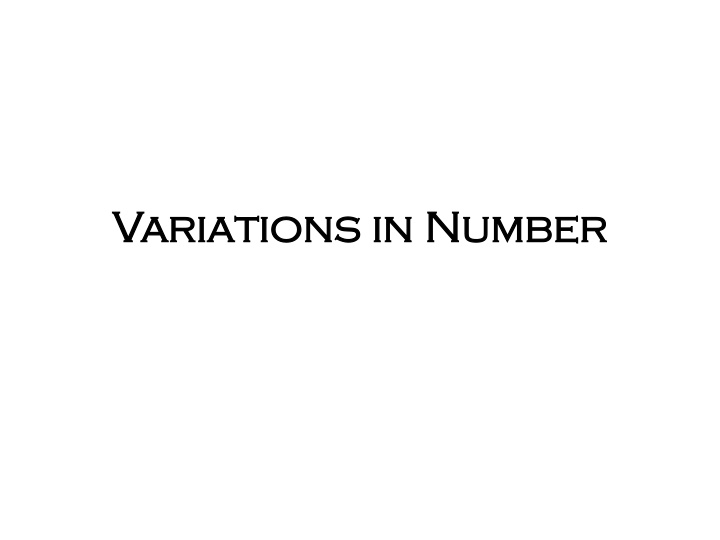
Blood Cell Variations and Disorders
Explore the nuances of blood cell variations and related disorders, including Neutrophilia, Neutropenia, Eosinophilia, and Basophilia. Learn about normal values, causes, and potential treatments for these conditions.
Download Presentation

Please find below an Image/Link to download the presentation.
The content on the website is provided AS IS for your information and personal use only. It may not be sold, licensed, or shared on other websites without obtaining consent from the author. If you encounter any issues during the download, it is possible that the publisher has removed the file from their server.
You are allowed to download the files provided on this website for personal or commercial use, subject to the condition that they are used lawfully. All files are the property of their respective owners.
The content on the website is provided AS IS for your information and personal use only. It may not be sold, licensed, or shared on other websites without obtaining consent from the author.
E N D
Presentation Transcript
Variations in Number Variations in Number
Normal Values: for adult Caucasian Total leukocytes Neutrophils 4.0-11.0 X 10 9/l 2.5-7.5 X 10 9/l Eosinophils 0.04- 0.4 X 10 9/l Monocytes 0.2- 0.8 X 10 9/l Basophils 0.01-0.1 X 10 9/l Lymphocytes 1.5-3.5 X 10 9/l Normal black and Middle Eastern subjects may have lower counts due to margination. 2
Variations in Number: Variations in Number: Neutrophilia Causes are: Infection (bacterial) Inflammatory conditions Neoplasia Metabolic conditions Hemorrhage, Hemolysis MPD 3
Drugs (e.g. corticosteroid therapy (inhibits margination): lithium, tetracycline) Treatment with myeloid growth factors (e.g. G - CSF) Rare inherited disorders Asplenia 4
Neutropenia The lower limit of the normal neutrophil count is 2.5 *10 9/L except in black people and in the Middle East where 1.5 *10 9/L is normal. When the absolute neutrophil level falls below 0.5 *10 9/L the patient is likely to have recurrent infections 5
Neutropenia Causes are: Congenital (Kostmann s syndrome) Cyclical neutropenia Marrow aplasia Megaloblastic anemia Infections (typhoid, miliary TB, viral hepatitis) Drugs Irradiation Immune disorders Hypersplenism 6
Eosinophilia Causes are: Parasitic infection Skin disorders Allergic conditions Neoplasia Myeloproliferative disorders Hypereosinophilic syndrome 7
Basophilia: An increase in blood basophils above 0.1 *10 9/L is uncommon. The usual cause is a myeloproliferative disorder such as chronic myeloid leukemia or polycythaemia vera. Reactive basophil increases are sometimes seen in myxoedema, during smallpox or chickenpox infection and in ulcerative colitis. 9
Monocytosis: A rise in blood monocyte count above 0.8 *10 9 /L is infrequent. Causes are: Chronic bacterial infections: tuberculosis, brucellosis, bacterial endocarditis, typhoid Connective tissue diseases SLE, temporal arteritis, rheumatoid arthritis Protozoan infections Chronic neutropenia Hodgkin lymphoma, AML and other malignancies Chronic myelomonocytic leukemia 10
Lymphocytosis Causes are: Viral infections (infectious mononeuclosis, infectious lymphocytosis, CMV etc). Bacterial infections: (Pertussis, occasionally healing TB, Brucellosis, Secondary and Congenital Syphilis, Typhoid fever, Diphtheria) Protozoal infections: Toxoplasmosis Lymphoproliferative Disorders: CLL, Lymphoma 12









